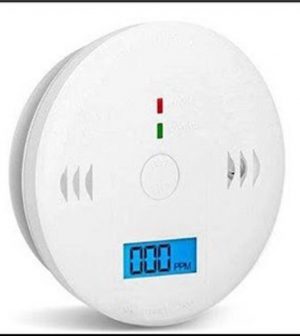- Skip Storing This Everyday Product in the Fridge Door
- Green Tea + B3 Pairing May Boost Brain Health
- Navigating Your Midlife Crisis: Embracing New Possibilities
- City Raccoons Showing Signs of Domestication
- Mapping the Exposome: Science Broadens Focus to Environmental Disease Triggers
- One Week Less on Social Media Linked to Better Mental Health
- Your Brain Changes in Stages as You Age, Study Finds
- Some Suicide Victims Show No Typical Warning Signs, Study Finds
- ByHeart Formula Faces Lawsuits After Babies Sickened With Botulism
- Switch to Vegan Diet Could Cut Your Greenhouse Gas Emissions in Half
Certain Carbon Monoxide Alarms Sold on Amazon May Not Work, Feds Warn

If you bought a carbon monoxide detector on Amazon and it was sold under the names GLBSUNION and CUZMAK, stop using it.
The U.S. Consumer Protection Safety Commission issued a warning because these detectors may fail to alert consumers to the presence of deadly CO, which is odorless and colorless. The detectors have a digital display.
More than 200 people in the United States die every year from accidental, CO poisoning associated with consumer products.
If an elevated level of the deadly gas is in the home and the detector isn’t working, injury or death are likely, CPSC noted.
Sensitivity tests performed by the commission on the GLBSUNION and CUZMAK detectors found that they failed to alert when exposed to predetermined concentrations of CO in the amount of 400 ppm. This is a violation of UL 2034, a voluntary safety standard, the commission said in a statement.
The CO detectors in the warning are made of white plastic, with approximate dimensions of 4 by 1.5 by 4 inches.
The devices are advertised to detect dangerous levels of carbon monoxide and alert with a flashing red LED and a loud alarm pattern.
The items sold on Amazon for between $16 and $40.
Model No. AJ-938 was sold under the Amazon ASIN B093Y1KK5Q and B093Y637CM. Model No. CD01 was sold under the Amazon ASIN B07MPVK6HG and B07K44HLCV.
Don’t purchase or sell these detectors, the CPSC urged. Dispose of them immediately. Install new, working CO detectors.
You can report a dangerous product or a product-related injury on www.SaferProducts.gov.
Every home should have a CO detector on each level and outside separate sleeping areas, the CPSC advised. These detectors should be battery-operated or have battery backup.
Test CO detectors frequently and replace batteries as needed.
Only buy CO detectors that meet the UL 2034 safety standard, the commission said.
More information
The U.S. Centers for Disease Control and Prevention has more on carbon monoxide.
SOURCE: Consumer Product Safety Commission, news release, March 16, 2023
Source: HealthDay
Copyright © 2025 HealthDay. All rights reserved.










